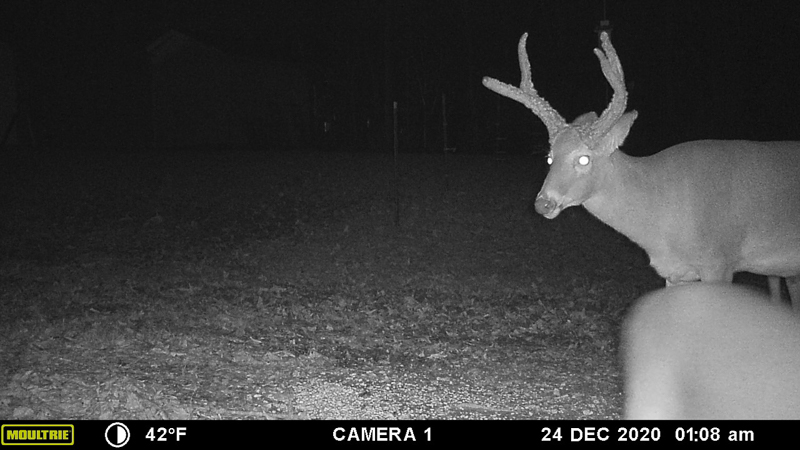Ask a Naturalist: Deer Antlers
For immediate release ‐ February 24, 2021
Ask a Naturalist
Contact: Jessica Wackes, 919.707.9850. Images available upon request

By Greg Skupien, Naturalist Center Curator
Antlers are one of the most amazing structures in the animal kingdom. All animals in the deer family, Cervidae, have antlers. Typically, only the males possess them. Female Caribou (Reindeer) are an exception, as they sport antlers alongside the males. Antlers are thought to have evolved primarily for intraspecific combat. That is, males of the same species use antlers to fight one another to establish dominance in hopes of reproducing with nearby females. Antlers may also be used in defense against predators and may serve as an indicator of male health and reproductive fitness.
Antlers are rapidly growing bones that are replaced cyclically. In fact, antlers are one of the best examples of complex tissue regeneration in mammals. As such, they have attracted recent attention from the scientific community. Researchers are currently exploring the mechanisms responsible for antler regrowth. Researching these mechanisms may have wide-ranging benefits for human medicine.
Cyclical antler regrowth is controlled by environmental and internal factors, such as day length and hormones. In White-tailed Deer (Odocoileus virginianus), antlers begin to grow in spring. Growth is most rapid during the spring and summer months. In adults, antlers may grow 1.5 inches per week during this period. To facilitate this rapid growth, antlers are covered with a layer of velvet. Velvet is a hair-like layer of tissue that supplies blood to the antlers. In the fall, antlers harden and the velvet dries and falls off. Deer will often rub their antlers on trees and other vegetation to help facilitate the removal of velvet. It takes energy to maintain a set of antlers so after the breeding season the antlers fall off and a scab-like covering forms over the location where the antlers attached to the skull. Several weeks later the process begins anew.
Most White-tailed Deer will develop “normal” antlers; however, injuries, genetic issues, and hormone imbalances may result in abnormalities. We recently received an image via Ask a Naturalist that appears to show a buck with such an abnormality. It is often difficult to make a diagnosis from a single photo, but we asked around and did our best to decipher what is happening with the buck’s antlers. One theory is that the animal is suffering from a disorder known as Cryptorchidism. Cryptorchid bucks suffer from extremely low testosterone levels. The lack of testosterone causes the antlers to remain in the velvet stage. Additionally, the antlers are not shed and continue to grow year-round. Cryptorchid bucks show no interest in mating and may exhibit other behavioral changes as well.
However, it’s difficult to say with certainty what is happening in the picture. It is possible that what appears abnormal in the photo may not be so strange after all. All antlers have some degree of “pearling.” These “pearls” are small, bead-like structures that form in rows on the antler. They are thought to aid in creating markings on trees that communicate with other deer. One way to confirm our theory would be to continue monitoring the area. We suggested that the landowner leave the wildlife camera in the same spot and see if the buck returns with more clues.
Previous Ask a Naturalist: House Centipedes | Older Ask a Naturalist posts
For more information about our upcoming activities, conservation news and ground-breaking research, follow @NaturalSciences on Instagram, Twitter and Facebook. Join the conversation with #visitNCMNS.

